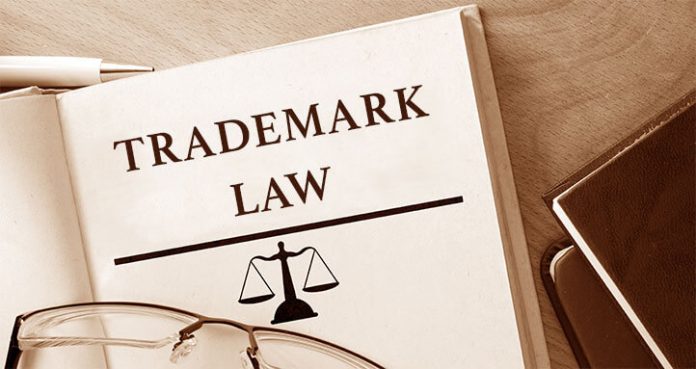This article is written by Harmanjot Kaur Kang and the article is edited by Khushi Sharma (Trainee Associate, Blog iPleaders).
While this Janmashtami, I was visiting a local temple, I was praying in front of idols and was completely mesmerized by the pomp and beauty of how they were decorated. This was such a blissful incident. However, when I went to the Shiva’s sanctum sanctorum of the temple, I looked into the eyes of the idol. Karikaye and Shiva were both idols kept in the same room. However, they were so similar looking at them, that I had to read the description of the name written beside the idols to pronounce the correct name.
Table of Contents
Introduction
In today’s world where everyone is allowed to move freely and express their views on controversial topics, we forget to take the time away from the crowded world and go into our deep thoughts. Today, even according to the constitution and the landmark judgement of the Sabrimala case, we see numerous verdicts breaking the traditions and customs. Where once India was so into a caste system that certain classes were even forbidden to go to a temple, today we see that we are far more liberal than what was there in India before.
What does the law say?
According to Section 2(e) of the Trademark Act, 2000:“certification trade mark” means a mark capable of distinguishing the goods or services in connection with which it is used in the course of trade which is certified by the proprietor of the mark in respect of origin, material, mode of manufacture of goods or performance of services, quality, accuracy or other characteristics from goods or services not so certified and registrable as such under Chapter IX in respect of those goods or services in the name, as proprietor of the certification trademark, of that person.
In this definition, we see the terms such as ‘distinguishable’ which marks the originality and unique character attributed to a particular product or object. This is also accompanied by the words such as accuracy which means that there is the correct description of the related product. Moreover, the brand value and the intangible assets related to credibility are established in this way.
How does law and religion intertwine
We see that Article 25-28 of the Indian Constitution guarantees all the citizens the freedom to practice, propagate and profess any religion of their choice. The term ‘Secularism’ is termed as neither any interference by becoming pro-god or anti-religious. However on reading articles 19, 14, 21 trijunction; we see that the State has to take reasonable measures to protect individuals against fanatics or chauvinistic people.
What are the international conventions
According to WIPO Convention on Intellectual Property: A trademark is a sign capable of distinguishing the goods or services of one enterprise from those of other enterprises. Trademarks are protected by intellectual property rights.
Now, here the controversy again arises about the term ‘goods’. Can idols be termed as ‘goods’? Now we have to dive into a little amount of jurisprudence about the subject.
Laws related to idols
According to the ‘Sale of Goods Act, 1930’ goods refers to anything which can be moveable in nature and is not attached to the ground. We always see idols placed on a higher pedestal for the mark of reverence and devotion by the devotees. So, here both the conditions are fulfilled.
However, if we go deeper into jurisprudence as a separate subject, we will observe that idols are given the status of a ‘legal entity. People donate their land to charity in the name of God. Here God is named as a ‘legal personality who is eligible to obtain gifts and transfer of ownership of the property.
On the contrary, it is the ‘Trust’ who is managing a particular temple, in whose name the deed is signed. This again creates a grey area about the true nature of ‘idols’.
If we again go by the previous definition of idols as ‘goods’ then we see that people tend to buy mini-idols for their homes as well. However, is the ownership of land transferable to these idols, would again create massive havoc and controversy.
Arguments supporting the view
This would help to differentiate idols very beautifully
As the idols will be carved in a specific way and the looks of the sculptures would be very well defined, people can easily differentiate between various idols.
This would help to earn more revenue
Because of a new and specialised field of sculpting and carving, people would now start taking fine arts and related degrees seriously. Due to a well-defined and structured fashion of design, there will be more and more innovation.
A new area of law related to IPR would be established
Similar to the design law and Trademark act, a specialized IPR related field will be created in case of laws related to IPR and religion.
Specialised people would be appointed as sculptures to carve the Art
There could be specialised people who would be able to promote the uniqueness of the art. Similarly, we see that this would provide uniqueness to the craft. This in turn would promote Intellectual Properties Act as well.
The monopoly of the ‘Trusts’ managing the temples will be less influential
This could lead to less dominance in the case of ‘trusts’ as there can be the case where the trusts would be less powerful now. The accountability of the income of the trusts can be seen here. We can find out how much donations they get, how these donations can be used for social welfare.
Less socio-cultural discrimination
Due to the Judgement’s abolition of the caste system, people will be more liberal and will increase overall cooperation and harmony.
More gender equality
As related to the Sabrimala Case Judgment, where the judiciary intervened to create a balance between Article 25-28 and Article 14, 19, 21 of women were protected by the Hon’ble Court which is appreciable.
Arguments against the view
This can create disturbance as well. The probable ways are discussed below:
More Communalism
There can be a communal uprise due to the emphasis of one religious dominance. This can be compared to the Marxism Revolution, which is similar to those of Karl Marx, who has termed religion similar to opium, which just ignores the pain and thinks that it does not exist at all.
Changes similar to demonetisation
This could also lead to changes similar to demonetization. In this case, the rights would be curtailed and perished. However, we see the successful implication of the Uniform Civil Code in the case of Goa, which could be possible if everyone would cooperate.
Curtails the Article 25-28 of Indian Constitution
This monopoly would lead to an infringement of the secular character of the constitution. Additionally, we see the right to profess, practice and propagate any religion would be in some way missing here. Therefore, it would lead to the infringement of fundamental rights.
The monopoly of the craftsmen and sculptures
The craftsmen and sculptures would not allow anyone to have an idol for less price. This would cause a limited choice for the consumers. This can result in trade cartels and a hike in the price.
Who would be claiming himself above God?
In such a case it would be an abrupt situation as who will claim that this God’s sculpture was carved by me. Who will become so arrogant to say this? Fanatics will again start their controversy.
Change in the status quo, even if a rickshawala would have put it on his cart for the religious purposes
Even the putting of the images of the Gods and Goddesses on the rickshaw etc. can make a person liable for the trademark infringement.
The killing of the small-scale businesses
In case someone was running a small pottery shop or a small sculpture shop, due to huge competition, there would be a collapse of the small businesses.
Are there any other similar instances?
Tirumalli Prashaad
In the case of Tirumalli Prashaad, registered as the GI Tag, it is again a grey area. There are no clear boundaries of whether it is a viable decision or not. The prashaad would soon be named with a ‘Trademark’ in case the decision would be pronounced.
No Photography in Golden Temple
There is no right to have photography in the Golden Temple. However, on careful analysis and survey, it can be scrutinized that there are a very small fraction of people who follow this rule. In the tortious cause of Webb vs Bird that no one can hold the right to sunlight, right to air and space.
Khajuraho Temple and unclear laws about nudity & obscenity
On one hand, the law evokes the provisions related to nudity and obscenity as punishable under Section 262 of IPC. However, we see instances where Khajuraho Temple is displaying erotic poses and still raising no controversy. Why is this so? Why has the law been so obscure? It is a surprise that such a piece of art is even given a place on the UNESCO Heritage list. However, the law is silent on the criteria of the selection in the UNESCO list vs. the Section 262 controversy.
Myntra case of the logo
People were very quick to respond to the Myntra case of the logo, representing the legs apart position, which was termed as obscene. However, in the case of criteria of the selection in the UNESCO list vs. the Section 262 controversy, there is a deep silence. Is it such that the implicit provisions of ‘privity of contracts’ under the Indian Contracts Act should be interpreted in a broader manner in the Indian law; such that, in case it would be beneficial to India, the thing would be implicitly agreed with a shy smile?
Are there other such grey areas in IPR as well
What would have happened in case Gita, Mahabharata were also having copyright?
According to the rule under the copyright to be of the lifetime of the author plus 60 years of age. However, considering Gita and Mahabharata as the ‘living soul’, it would have been a difficult job to interpret the exact position of law. As Gita is already a living soul, then why are the shlokas of Gita and Mahabharata allowed to run across Instagram pages and YouTube videos?
In the light of this topic, where we see today that there are various Newspaper controversies such as copyright strikes in case of circulation of newspaper in the Telegram groups for free.
Digitized format of Japji Sahib and other related areas:
Similarly, the status of a ‘living God’ given to Sikhism religious book ‘Shri Guru Grantha Sahib’ as a living God. However, if we apply the Copyright Act here, then even the digitalization and the free licensing of the religious text as the android apps and iOS apps would also be controversial. Who has been given the right to license? What were the governing laws? Who were the competent authorities?
What can be the way forward
With the constant evolution and the bold judgements with an impartial mind such as Sabrimala Case, Triple Talaq Case, Dissolution of Muslim Marriage Act, 1939, or the decision to allow Muslim women to have maintenance post-Iddat period, the judiciary is taking small baby steps towards modernisation. The legality of homosexuality, same-sex marriage are some other instances where bold decisions have been taken keeping an eye on the changing era and trends.
Students of Lawsikho courses regularly produce writing assignments and work on practical exercises as a part of their coursework and develop themselves in real-life practical skills.
LawSikho has created a telegram group for exchanging legal knowledge, referrals, and various opportunities. You can click on this link and join:
https://t.me/joinchat/L9vr7LmS9pJjYTQ9
Follow us on Instagram and subscribe to our YouTube channel for more amazing legal content.













